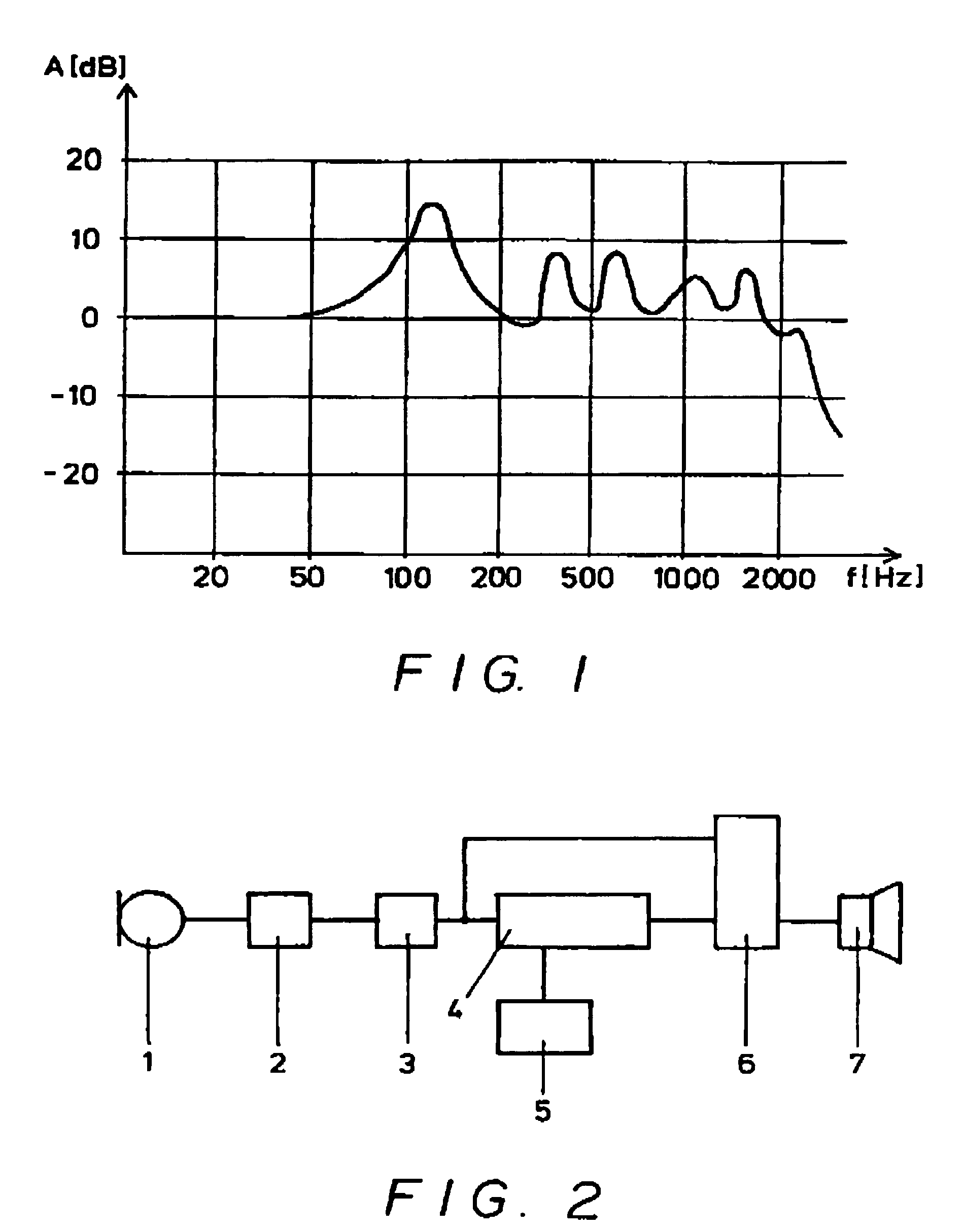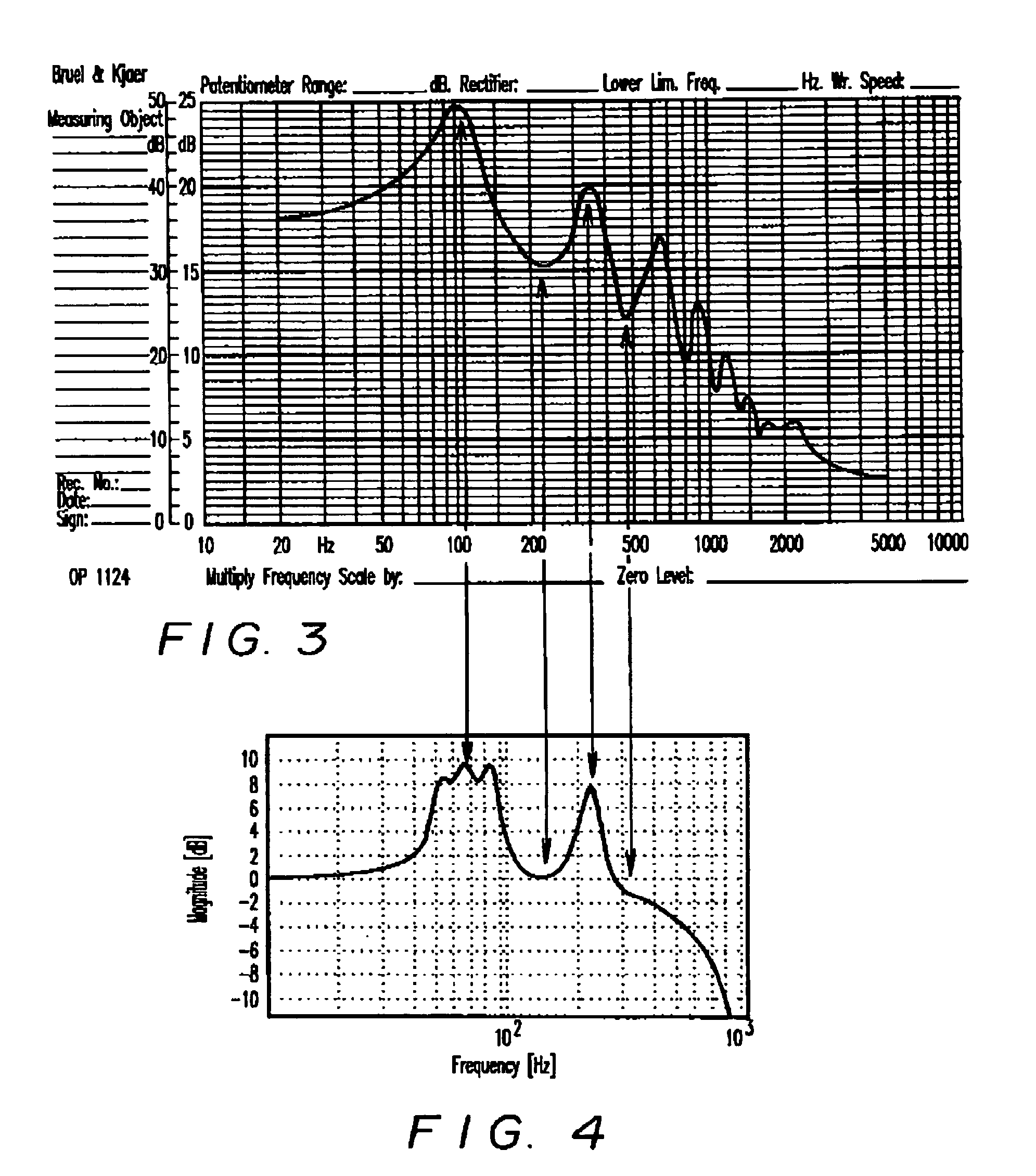Electronic stethoscope
- Summary
- Abstract
- Description
- Claims
- Application Information
AI Technical Summary
Benefits of technology
Problems solved by technology
Method used
Image
Examples
example
[0038]A Littman Classic II stethoscope was measured by two methods. On the one hand, the mechanical dimensions were measured, and the electroacoustic equivalent circuit was developed in the situation where the stethoscope was in contact with the skin as the transmitter and the ear pieces inserted in the ear canal. On the other hand, a unit was measured in a standard Brüel & Kjær acoustic measuring setup with a sweep oscillator and filter and a plotter. FIG. 3 shows the measured transfer function. On the basis of a calculation of the transfer function by means of the electroacoustic equivalent, the filter coefficients for a digital filter were calculated according to standard practice for the first resonance peaks in the transfer function. These coefficients are reproduced in Table 1.
[0039]
TABLE 1Filter coefficients for electronic stethoscope (digital filter)First resonator (2nd order IIR filter)A0 = 0.167283222079277039A1 =−0.331625401973724365A2 = 0.164647430181503296B0 = 1.0000...
PUM
 Login to View More
Login to View More Abstract
Description
Claims
Application Information
 Login to View More
Login to View More - R&D
- Intellectual Property
- Life Sciences
- Materials
- Tech Scout
- Unparalleled Data Quality
- Higher Quality Content
- 60% Fewer Hallucinations
Browse by: Latest US Patents, China's latest patents, Technical Efficacy Thesaurus, Application Domain, Technology Topic, Popular Technical Reports.
© 2025 PatSnap. All rights reserved.Legal|Privacy policy|Modern Slavery Act Transparency Statement|Sitemap|About US| Contact US: help@patsnap.com



